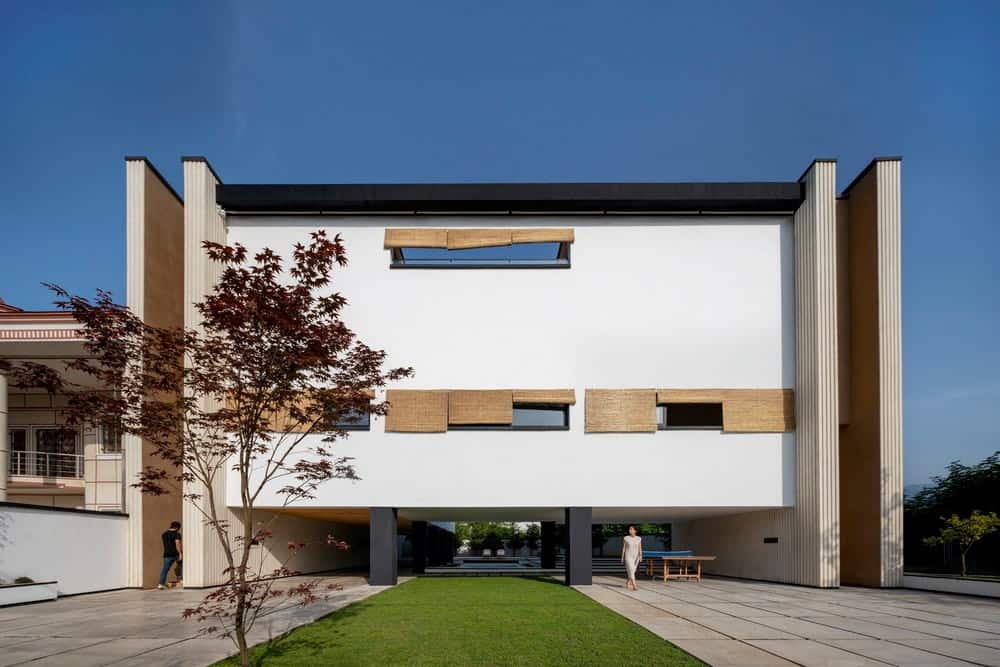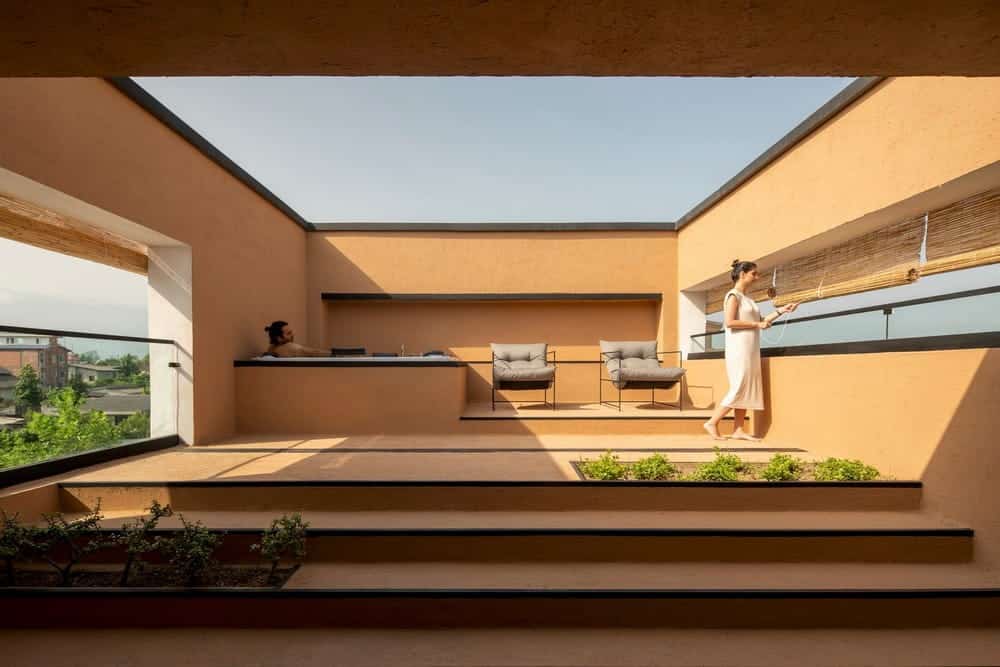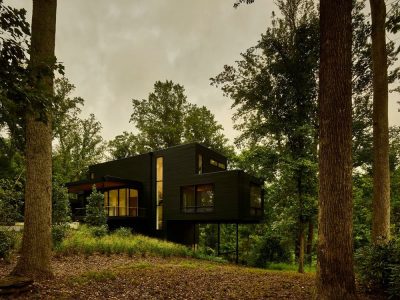
Project: Samon Villa
Architecture: NaP studio
Lead Architects: Farbod Yamani, Naghmeh Kasiri, Arman Mashhadi
Structure Engineers: Mohammad Panahi
Location: Abbasabad, Iran
Area: 550 m2
Year: 2023
Photo Credits: Deed Studio
Northern Iran is known as a green area with vast and fertile lands. In the past, the urban structure of this area was defined in such a way that the lands had relatively large divisions with agricultural functions, and the houses were located in the center of these lands in dimensions and proportions smaller than the outer space. So, a major part of the residents’ activities flowed into outer space. But in recent years, the structure and division of land has undergone changes and has gradually become small. Today, the dimensions of the land have reached such a level that practically, after the construction of the building, there would not be much useful and usable space on the land, and it means the death of daily activities in outer space. In a way, by removing the open space in these houses, the special life and culture of this area, which was flowing in the outside space, has been completely destroyed.
In the design process, we looked at old houses in this climate. The yard creates a contrast between the interior and exterior lifestyle of these houses. Keeping the idea of these spaces and redefining it in today’s style creates a transitional situation. A government that gives Samon Villa the characteristic of always finding itself in conflict between tradition and modernity. The idea of the project is to preserve the ground floor as a platform for the formation of various activities in the dimensions of the entire project site. The mass and the internal spaces are suspended on the floor by occupying the least possible footprint, and with the internal space being placed on the upper level, the entire surface of the ground freely redefines the concept of the yard.

The definition and formation of the suspended mass of the building on the ground floor by creating the lowest occupation level in order to maintain the quality of the courtyard space serves the main idea of the project. This mass (facing the city) is formally coordinated with the form of the surrounding buildings, and the privacy of the open space is provided by a movable curtain that sometimes maintains its traditional function and gives a large screen to the city. On the other hand, the mass has failed to confront nature to enter the light and create spatial diversity, which is active and dynamic.
Also, in the selection of materials, it is important to use the old materials of the region to return to the same quality of space in the old houses. For this purpose, cement (a modern and common material in newly built houses) and thatch mortar (which is an original and traditional material and compatible with the region’s climate) have been used in the building. It is hoped that this alternative will somehow lead to the revival of activities and promotion of lifestyle in the new urban organization of this climate.






















